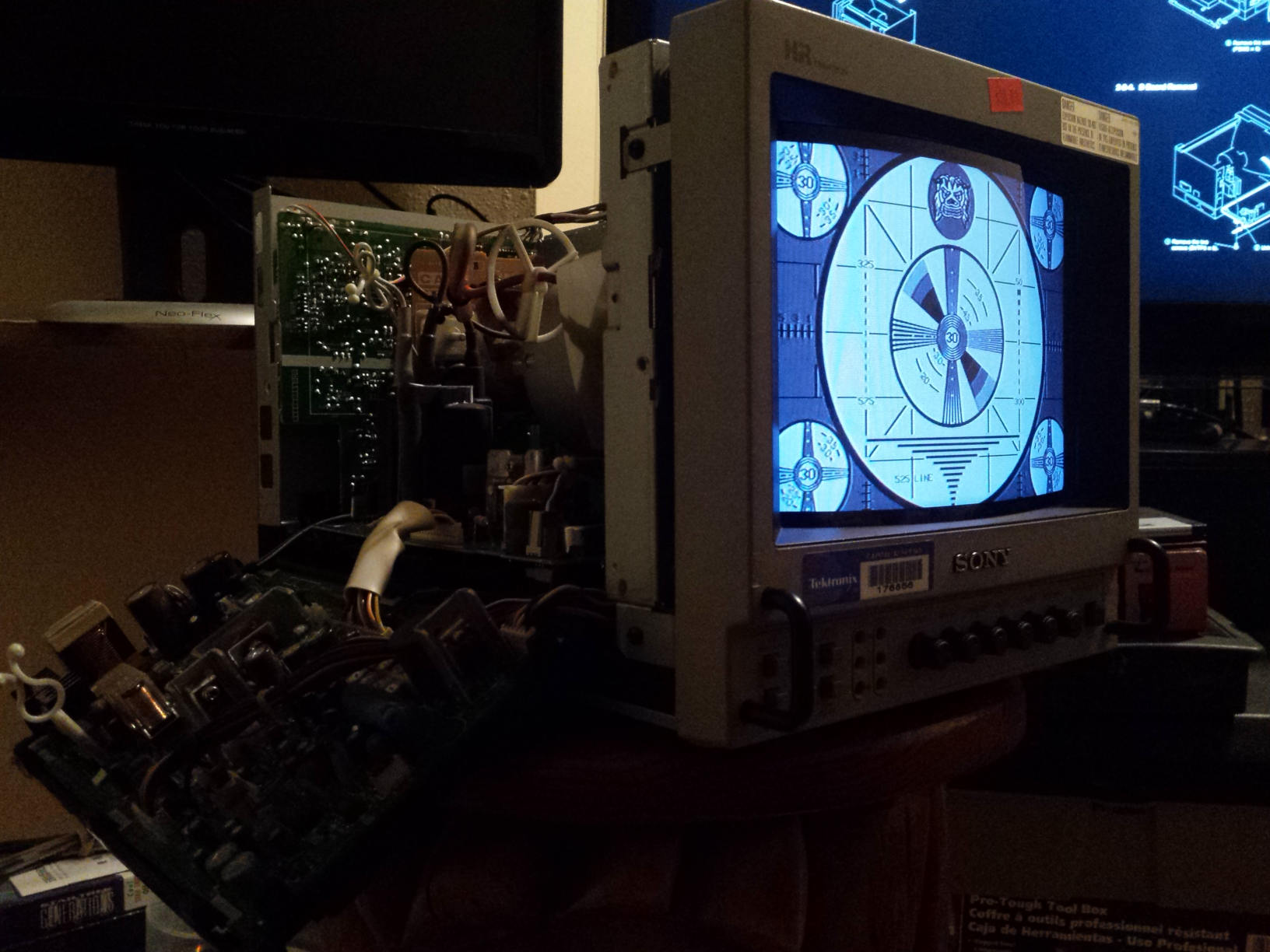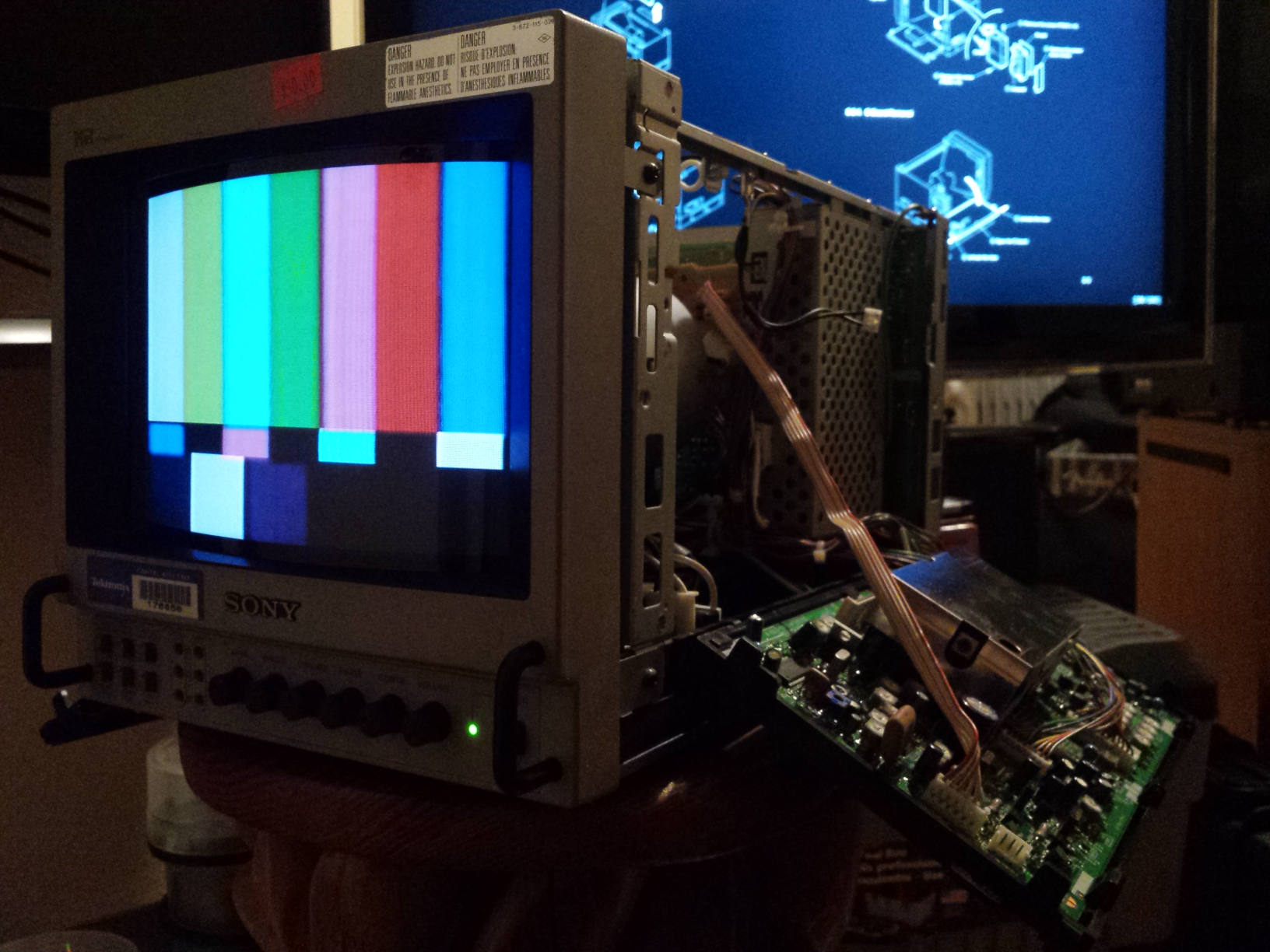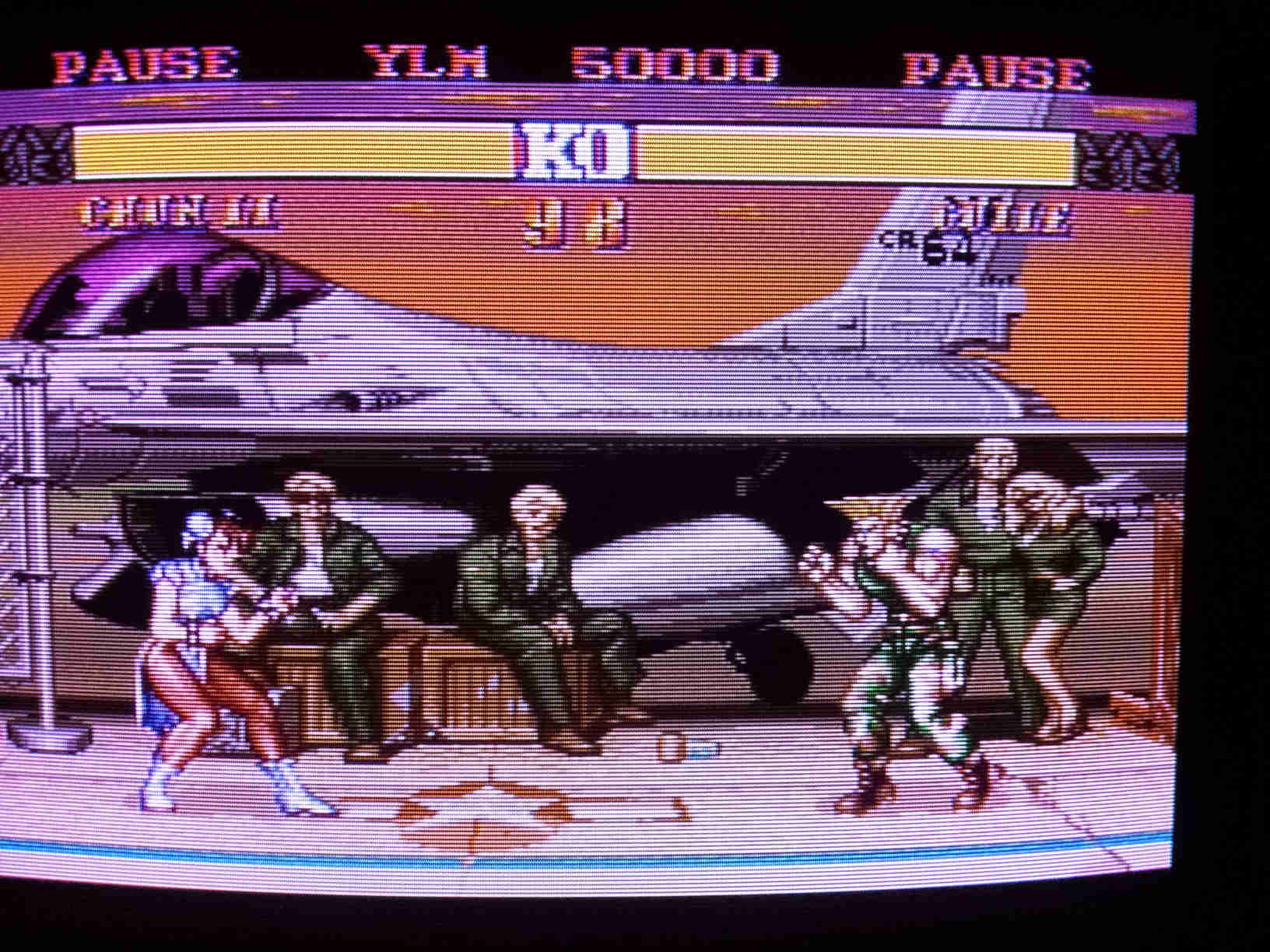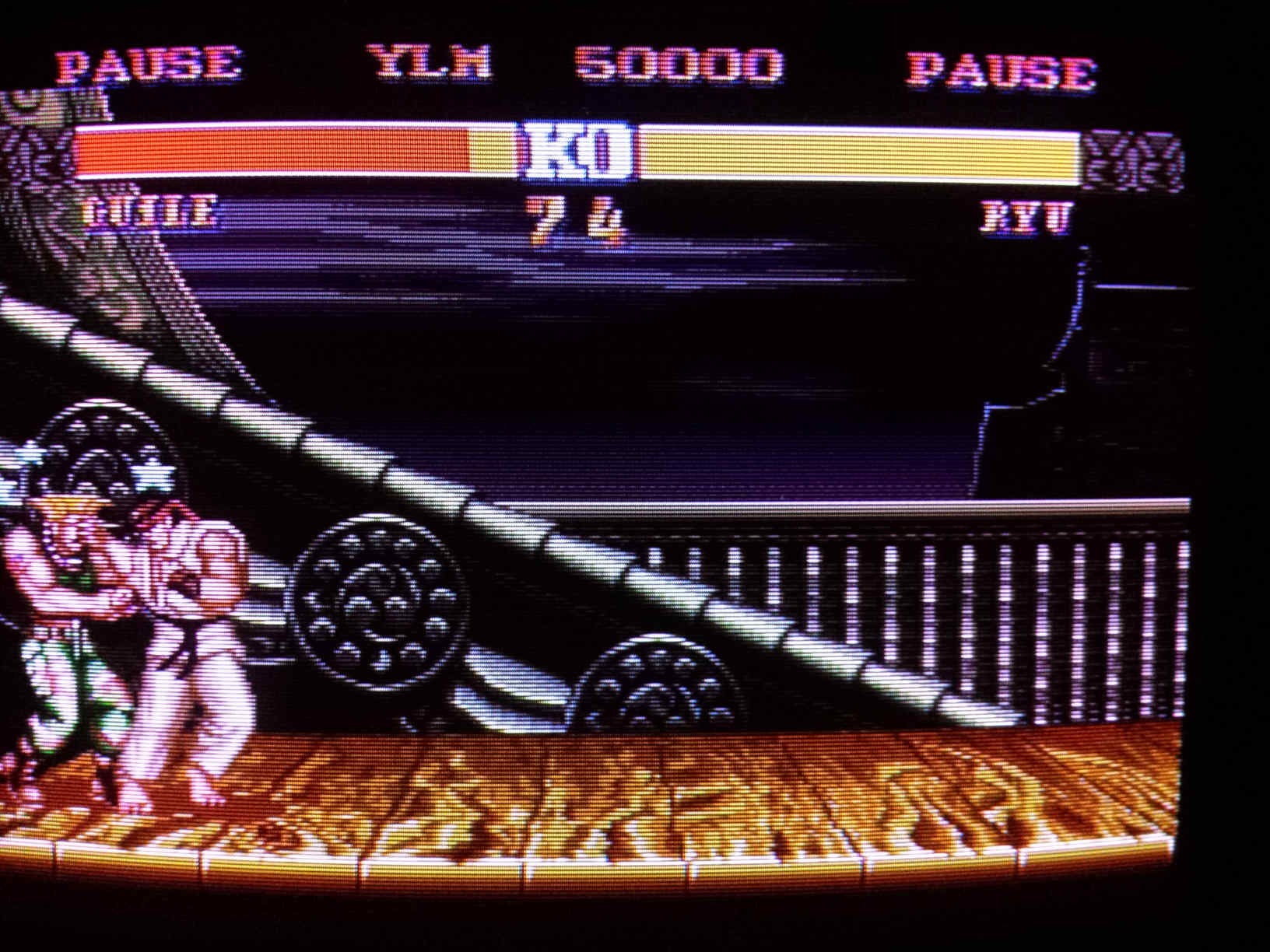Played the DOS version to completion, enjoying every bit of it. Then the TurboGrafx-16 CD version with its satisfying cinematic reveal of the big plot twist. Really wish I could play more games like this!
thouartfrugal
Congrats and mad respect! Was reading some of the details in your comments in the other thread. A function generator is definitely on my want list, along with a CRT analyzer (if I happen to find a deal on a good one).
The monitor had two obvious problems at first: yellow tint and rainbow patterning. Quick pass with a degaussing coil took care of the latter. Hooked up a composite lead and threw on my low-quality DVD-R copy of my VHS copy of my NTSC Reference Laserdisc and made some quick adjustments to the monitor; results below:

monoscope

SMPTE bars
To make this post somewhat more relevant to the community:

Street Fighter II (PC Engine) Blanka Stage

Street Fighter II (PC Engine) Guile Stage

Street Fighter II (PC Engine) Ryu Stage

Street Fighter II (PC Engine) Zangief Stage
~~The colors in the game look different in these pictures; hard to make them accurate. But it looks good in person.~~ (edit: better camera settings, more colorful game)
Was reaching for my blue filter to set Color/Tint when I remembered this monitor has a "Blue Only" feature; pretty neat! Surprisingly, adjusting the Screen control on the flyback transformer seems to have more effect on the white balance than on the contrast. Still, had to maximize the Blue Gain control on the PCB and on the front panel to get the white balance close as possible for the time being. Heck, I might not actually bother with it much further; it looks pretty good. Will have to try the RGB inputs.
Right you are; this one's a PVM-8043MD. Looks like it lacks the 16:9 mode, manual degauss and tally light. I believe MD signifies "medical"; removed the cover and there is some shielding around the deflection yoke.
Thank you for mentioning that model number. That page has some good troubleshooting info relevant to the white balance problem I'm seeing with this one. Will post something nice if I can fix it!
Not calling you out personally, Lauchs and I do apologize if it seems that way. Just that reading in your question the usage of "your side" and "the other side" brought to mind once again the fact that many people I know have come to view politics a team sport. Didn't decide anything about your beliefs.
In this study, were the terms "conservative" and "liberal" self-applied by the subjects? People do adopt those labels for themselves, but I would urge careful consideration before doing so. Where they can be useful in describing one's position on a specific issue, when applied directly to the person they are needlessly reductive. Exactly the sort of thing that facilitates the mental assignment of oneself or others into an imaginary camp on one side of a false dichotomy.
The essence of what you are saying makes sense to me, and I do understand those terms are routinely applied to people both by themselves and by others. But your post, though well-meaning also serves to perpetuate the "conservatives vs. liberals" view of political discourse. I realize I may be Sisyphus under the boulder here, but it's my challenge to the United States political duopoly.
Do you consider yourself a partisan? The pervasive notion that there are "two sides" and you must be on one of them, it results in ordinary citizens viewing one another with suspicion and fear. It's a useful lie that serves the interests of those who would foster division in order to maintain the cultural status quo.
Not calling you out in particular. Just that I think about this every time something is posted that perpetuates this false "our team, their team" narrative because it's a powerful, insipid tool of oppression against the common person. True, people differ on contentious issues, sometimes irreconcilably. But if we are made to view one another as dyed-in-the-wool adversaries over that, we will fail to discover our common interests much less promote them through solidarity.
Not denying that the two major political parties in the United States do hold seemingly unassailable dominance in major elections like the one we're entering, largely due to determining winner by first-past-the-post. And yes, sadly it's very often the case that a meaningful vote will support one of those parties. But it doesn't have to be this way forever. In fact, I will be able to vote for city office candidates by ranked choice starting this year!
Sorry for the rant. Not an expert. Just a dude who wants to love his neighbor.
Gonna go with Donkey Kong (1994). Made for a handheld (Game Boy) but also prominently features an enhanced mode enabled by running it on Nintendo's Super Game Boy accessory for the SNES/Super Famicom (actually mine's an SGB2–even better).
Nice pick! Was my first experience playing a Rogue-like game, though I wouldn't know that term for at least two decades.
I'm as old as my tongue, and a little older than my teeth.

Dummy here. Reads to me as a regional brand name and an ambiguous generic term. Would soaking in naphtha work?